Archived Storm Damage Blog Posts
Electrifying Truths: The Science Behind Lightning, Debunking Myths
1/3/2024 (Permalink)
Lightning, with its spectacular flashes and thunderous roars, has captivated human imagination for centuries. However, the myths and misconceptions surrounding this natural phenomenon often overshadow the fascinating science that governs it. In this blog, we embark on a journey to uncover the truth about lightning, exploring the scientific intricacies that dispel common myths and shed light on the electrifying reality.
Myth 1: Lightning Never Strikes the Same Place Twice
- Reality: Lightning can and does strike the same place multiple times.
While it's true that lightning seeks the path of least resistance, geographical features and structures can influence its behavior. Tall structures, like skyscrapers and communication towers, are more likely to attract lightning due to their height. Lightning rods are designed to intercept and conduct lightning safely to the ground, and they often experience multiple strikes.
Myth 2: Lightning Only Strikes During Thunderstorms
- Reality: Thunderstorms are the primary lightning producers, but lightning can occur in other weather conditions.
Thunderstorms are the most common generators of lightning, but it can also occur in volcanic eruptions, intense forest fires, and even in non-thunderstorm environments. These events, known as "dry lightning," are a reminder that the conditions for lightning can exist beyond the traditional thunderstorm setting.
Myth 3: Rubber Tires Protect You from Lightning in a Car
- Reality: The car's metal frame, not the rubber tires, offers protection from lightning.
While it's true that rubber is an insulator, the metal frame of a car creates a "Faraday cage," conducting the electrical charge around the occupants and into the ground. So, it's not the tires that provide protection but rather the metal enclosure of the car.
Myth 4: Lightning Never Strikes the Ocean
- Reality: Lightning can and does strike the ocean, posing risks to those in and around the water.
Water is a good conductor of electricity, and lightning can strike the ocean, potentially affecting aquatic life. Swimmers, boaters, and those on the beach are still at risk of being struck indirectly by lightning, especially if they are in or near the water.
Myth 5: Lightning Can Turn People Into Ash
- Reality: While lightning strikes can cause severe injuries, they rarely result in complete incineration.
Lightning can cause serious injuries, ranging from burns to neurological effects, but the idea that it instantly turns people into ash is a dramatic exaggeration. Most lightning-related fatalities are due to the electrical and thermal injuries caused by the intense heat and electrical currents.
Myth 6: Lightning Never Strikes in Winter
- Reality: Lightning can occur in any season, including winter.
Although lightning is more common in warmer months, it's not exclusive to summer. Winter thunderstorms, though less frequent, can still produce lightning. Snow and ice can act as conductors, and lightning during winter storms is not unheard of.
Myth 7: Lightning Can Only Strike from the Clouds to the Ground
- Reality: Lightning can travel from the ground up and horizontally within clouds.
While cloud-to-ground lightning is the most well-known, intra-cloud lightning (within a cloud) and cloud-to-cloud lightning also occur. In some instances, lightning can even travel from the ground up, known as "ground-to-cloud" or "upward lightning."
Myth 8: Lightning Never Strikes the Poles of the Earth
- Reality: Lightning does strike the Earth's poles, both North and South.
Contrary to the belief that lightning avoids the polar regions, thunderstorms and lightning can and do occur in these areas. While less frequent than in equatorial regions, polar lightning is a natural occurrence in the Arctic and Antarctic.
Lightning, far from being a mythical force, is a natural phenomenon grounded in scientific principles. Understanding the science behind lightning not only dispels common myths but also fosters a deeper appreciation for the power and beauty of this atmospheric occurrence. As we unravel the mysteries of lightning, we gain insights that help us stay safe, dispel misconceptions, and marvel at the awe-inspiring forces that shape our natural world.
Guide to Preventing Ice Dams and Roof Leaks
9/12/2023 (Permalink)
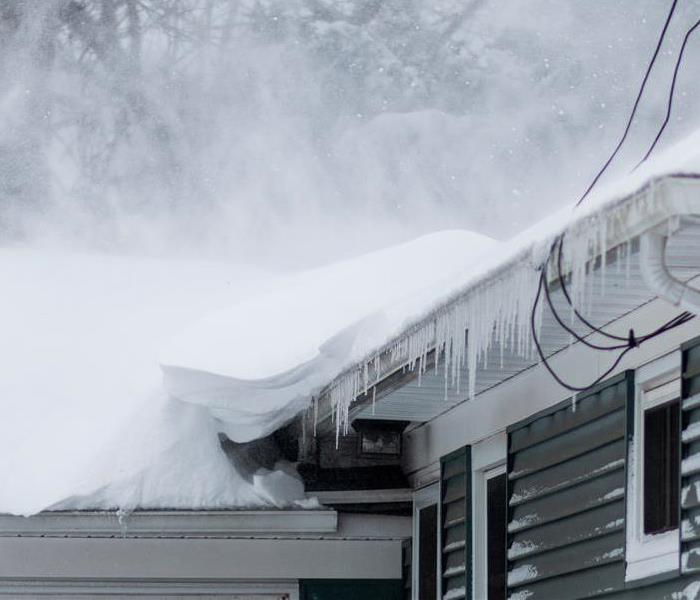 By taking these preventative measures, you can enjoy a worry-free winter and protect your home and property from the potential hazards of ice dams.
By taking these preventative measures, you can enjoy a worry-free winter and protect your home and property from the potential hazards of ice dams.
Winter in the Northeast brings picturesque snowscapes, but it also poses potential risks to your home and property, such as ice dams and roof leaks. Ice dams are a common winter woe that can lead to water infiltration, damaging your roof, ceilings, and walls. As a homeowner or property owner, it's essential to take proactive measures to prevent ice dams and roof leaks. In this blog, we'll explore effective strategies to safeguard your home and property during the winter months and keep ice dams and roof leaks at bay.
Understanding Ice Dams and Roof Leaks
Ice dams form when snow on the roof melts, flows down to the eaves, and refreezes due to the colder temperatures at the roof's edge. As the ice accumulates, it creates a barrier that traps water, which can seep into your home, causing roof leaks and water damage. Roof leaks not only compromise the structural integrity of your property but also lead to mold growth and other potential hazards.
Ensure Proper Attic Insulation and Ventilation
One of the key contributors to ice dams is an inadequately insulated and poorly ventilated attic. Warm air escaping from your living spaces can cause snow on the roof to melt, leading to ice dam formation. Ensure your attic is well-insulated to prevent heat loss and maintain a consistent temperature. Additionally, proper ventilation in the attic helps regulate the temperature and prevents snow from melting and refreezing at the roof's edge.
Clean Gutters and Downspouts Regularly
Clogged gutters and downspouts can exacerbate ice dam formation. Before winter sets in, ensure your gutters and downspouts are clear of leaves, debris, and ice buildup from fall. This allows melted snow to flow freely and reduces the risk of ice dams forming.
Use Roof Rakes for Snow Removal
Roof rakes are useful tools for preventing snow buildup on your roof. After heavy snowfall, use a roof rake to remove snow from the roof's edge, where ice dams typically form. Be cautious not to damage your roofing materials during snow removal.
Apply Ice Dam Prevention Products
Several ice dam prevention products are available, such as heat cables or heated panels, which can be installed along the roof's edge. These devices help create a pathway for melted snow to drain, preventing ice dams from forming.
Seal Air Leaks in Living Spaces
Reducing air leaks in your living spaces can minimize the warm air flow into your attic, thus reducing the likelihood of ice dam formation. Caulk and weatherstrip windows and doors, seal gaps around pipes and vents, and insulate any exposed areas.
Schedule Professional Roof Inspection
Before winter arrives, schedule a professional roof inspection. A qualified roofer can assess the condition of your roof, identify potential vulnerabilities, and address any issues that could lead to ice dam formation and roof leaks.
Preventing ice dams and roof leaks requires proactive measures and attentiveness to your home's insulation and ventilation. Properly insulating and ventilating your attic, cleaning gutters, and using roof rakes for snow removal are all essential steps. Additionally, employing ice dam prevention products and sealing air leaks in your living spaces contribute to safeguarding your property during winter. Scheduling a professional roof inspection before the onset of winter ensures your roof is in good condition and ready to withstand the challenges of the season. By taking these preventative measures, you can enjoy a worry-free winter and protect your home and property from the potential hazards of ice dams and roof leaks.
5 Essential Tips for Protecting Your Property from Flooding
6/10/2023 (Permalink)
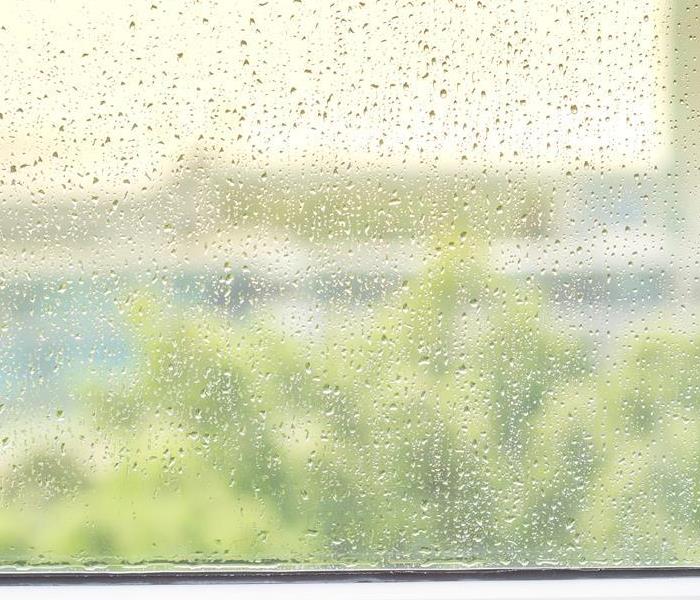 Flood proofing your home is essential for protecting your property.
Flood proofing your home is essential for protecting your property.
Living in an area that's prone to flooding can be challenging. If you're a homeowner, you know how devastating it can be to deal with the aftermath of flood damage. Not only does it cause significant financial losses, but it can also be emotionally draining. Fortunately, there are steps you can take to minimize the risk of flood damage and protect your home. In this blog, we'll discuss 5 ways to flood-proof your home and help you prepare for the worst.
1. Install a Sump Pump
A sump pump is an essential tool that can help prevent water from entering your home. It works by collecting water in a sump basin and then pumping it away from your home's foundation. This tool is especially useful if you live in a low-lying area or a place with a high water table. Installing a sump pump can provide you with peace of mind and help keep your home dry during heavy rains.
2. Elevate Electrical Outlets
Electrical outlets can be a significant risk during a flood, as they can cause electrical shocks or even fires. One of the best ways to prevent this is to elevate them above the flood level. You can have your electrician install them at least one foot above the expected flood level. By doing so, you'll reduce the risk of electrical damage and ensure your family's safety.
3. Waterproof Your Basement
Basements are one of the most common areas to experience flood damage. Water can seep through the walls or floor and cause extensive damage to your property. To prevent this, consider waterproofing your basement. There are several ways to do this, including installing a waterproof membrane, using a sealant on the walls, and improving drainage around the foundation.
4. Keep Your Gutters Clean
Clogged gutters can lead to water buildup, which can cause flooding around your home's foundation. To prevent this, make sure to keep your gutters clean and free of debris. You can do this by cleaning them out regularly or installing a gutter guard to prevent leaves and other debris from accumulating.
5. Invest in Flood Insurance
Even with all the preventative measures you take, it's still essential to have flood insurance. Flood insurance can help cover the costs of repairs or replacements for damages caused by flooding. It can provide you with peace of mind knowing that you'll be able to recover some of the financial losses caused by flood damage.
In conclusion, flood-proofing your home is essential for protecting your property and ensuring your family's safety during a flood. By following these tips, you can minimize the risk of flood damage and keep your home dry. Remember to stay informed about the weather forecast in your area and take action before the storm hits.
How to deal with winter storm damage
2/17/2023 (Permalink)
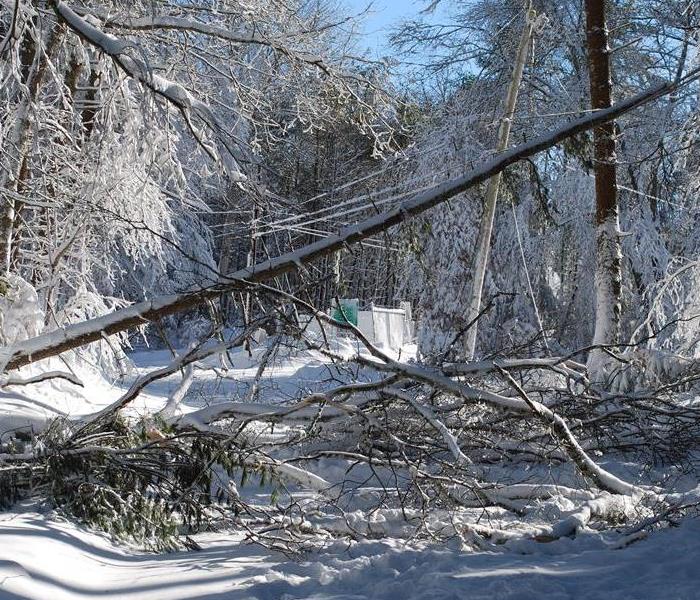 When winter storm damage strikes, give SERVPRO a call at the first sign of damage.
When winter storm damage strikes, give SERVPRO a call at the first sign of damage.
Winter storms can cause significant damage to your home and property. It's important to take steps right away to deal with the damage, document it, and begin repairs.
Assess the damage.
After a winter storm, it's important to assess the damage. First, determine the extent of your property's damage by looking for broken branches and other visible signs of storm damage. If you have trees on your property that may be at risk for falling down or damaging other structures or vehicles in their path, contact an arborist who can assess whether they need to be removed immediately.
Next, take photos of all damaged items so you have an accurate record for insurance purposes. Make sure to document each item with an estimate of its replacement value, this will help ensure that all costs related to repairing or replacing items are covered by insurance claims after filing them.
Check for structural damage.
Check for water damage. If your basement has flooded, it's best to call a professional to clean up the mess. The same goes for any rooms that have been inundated with snow or rainwater, such as a garage or porch. Check for structural damage in the roof or walls of your home especially if the storm was accompanied by high winds and hail.
Look out for mold or mildew growth on surfaces like ceilings, walls and floors (especially if there was recent flooding). This can cause damages in the future.
Clear snow and ice.
Clear snow, ice and debris from around your home to prevent damage to your home and make it easier for emergency workers to reach you after the storm has passed.
Use a shovel or snow blower to clear the area around your home. If using a shovel, wear protective clothing such as gloves and boots, if using a snow blower, wear protective clothing as well as goggles to protect against flying debris. Make sure that all snow has been removed from the roof of your house before going inside this will help prevent weight overload on roofs that have already been weakened by heavy loads of wet snow.
Documentation.
Before you start cleaning up, take photos of everything. This is important for insurance purposes and also because it's likely that once you get started on a project, your memory will be fuzzy about where things were when the storm hit. You don't want to accidentally throw away something valuable by mistake!
Make sure to document all damaged items in writing, the cost of replacing them and their condition before they were damaged.
Winter storms can be devastating, but with proper preparation and planning you can minimize the impact on your home. It's important to know what types of damage may occur in your area and how best to deal with them. If you're unsure about what steps should be taken next after a storm, contact SERVPRO of South Philadelphia / SE Delaware County today! We'll help guide you through each step of the way until everything is back in working order again.
Understanding Roof Damage Mitigation
7/8/2022 (Permalink)
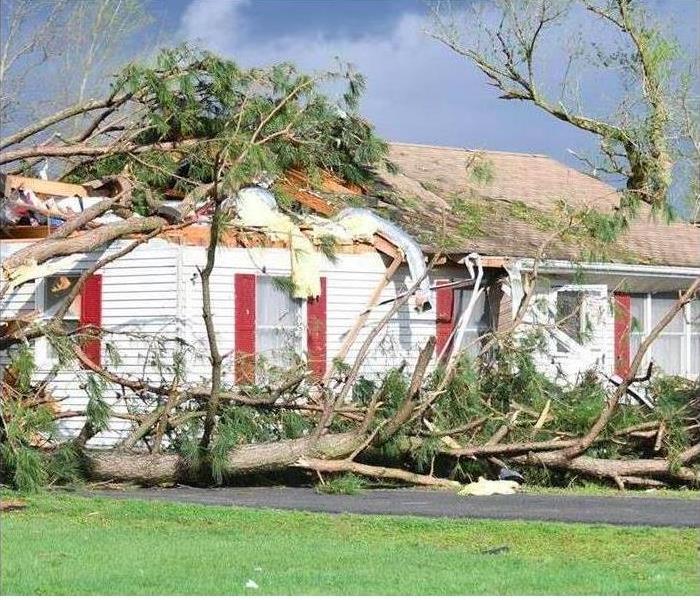 When a severe storm hits your Philadelphia, PA, home, the mix of rain, hail, and wind may result in roof damage.
When a severe storm hits your Philadelphia, PA, home, the mix of rain, hail, and wind may result in roof damage.
Understanding Roof Damage Repair
When a severe storm hits your Philadelphia, PA, home, the mix of rain, hail, and wind may result in roof damage. After the storm calms, the first step should be to call your insurance company. Considering that many others could also be filing a claim, it could mean a significant wait time until the adjuster comes. In the meantime, it is likely that your policy requires you to mitigate against further damage. Calling a storm damage restoration specialist to complete an inspection will help provide guidance and a plan of action for restoration during the wait.
What Does Mitigation Mean?
Hail and wind damage can expose the roof, break windows and damage siding. If another storm moves in, those weakened areas will be more likely to suffer secondary issues, such as water damage or mold growth. In many cases, if mitigation measures aren’t taken, it may affect the claim. To avoid that, the following steps should be taken:
- Cover any broken or cracked windows or skylights with plastic.
- If there is an obvious leak roof, install a tarp in the attic to temporarily board it up. Ensure buckets are placed under the roof to catch any additional water leaking in.
- A tarp should also be used on areas where there is missing or damaged siding.
- Remove debris that could cause additional damage, such as hanging or fallen branches.
Extra Steps to Take
When roof damage happens, precautions need to be taken to ensure the claims process goes as smoothly as possible. Be sure to document all losses before any temporary mitigation, as well as after. When immediate repairs are needed, save any associated receipts. If there was hail, try to collect a piece and place in the freezer.
Dealing with roof damage isn’t always a fast fix. Be sure to protect your home from further damage by making temporary repairs. That will help minimize issues and may benefit your claim.
4 Benefits of Window Shutters
6/6/2022 (Permalink)
 Board up your windows in your Collingdale, PA home. This could avoid moisture from slanting rain out of windows and prevent them from cracking.
Board up your windows in your Collingdale, PA home. This could avoid moisture from slanting rain out of windows and prevent them from cracking.
Window Shutters Have 4 Advantages
Protecting your home in Collingdale, PA, from damages caused by high winds can take a few different forms. The most logical and permanent protection involves a durable siding such as professionally installed vinyl or aluminum siding or, even better, a brick facade. The next step is to look for window protection, and this could come in the form of shutters, which have the ability to improve your home in several ways.
1. Nice Looks
With many different styles to choose from—paneled, louvered, board and batten, and Bermuda— a window covering on the exterior of your home can add a certain appeal and even improve property values. You can choose from a variety of materials such as cedar, basswood, vinyl, and faux wood.
2. High Winds Protection
If you are worried about storms, it doesn't hurt to put up a covering over your windows. This could prevent windows from cracking and it might even keep out moisture from slanting rain. Storm shutters offer powerful protection from extreme weather.
3. Privacy
You probably don't want people peering into your home, so putting a solid covering over the windows can only enhance your level of privacy. This creates a cozy feel for your castle even on the stormiest nights.
4. Energy Efficiency
A shutter system over your windows is a good way to control the cold coming into your home and the heat leaving your home in the cold months, and vice versa in the warm months. This also allows you to control the solar radiation coming into your abode, which can make a big difference in your comfort level.
Storm protection takes on many guises, but if your home is impacted by wet weather be sure to reach out to a professional storm mitigation team. Highly-trained technicians can take care of water damage and restore your home to its original condition, even after high winds have come through.
The 3 Most Important Parts of a Business Continuity Plan
4/1/2022 (Permalink)
 Business owners must have a plan in place to resume operations as soon as possible following a major storm or an on-site disaster.
Business owners must have a plan in place to resume operations as soon as possible following a major storm or an on-site disaster.
The Three Most Critical Elements Of A Business Continuity Plan
Planning for the unexpected always poses challenges. A plan to resume business as soon as possible after a major storm or an on-site disaster is essential for business owners. Learn more about the three most important parts of a continuity plan for a business operating in Collingdale, PA.
1. A Business Impact Analysis
Analyzing business impact is an attempt to account for the effects of a shutdown caused by a disaster or emergency. Closure due to flooding may be a practical scenario for a business located in an area with a high flood risk. A BIA should account for the event, its effects on business activity, potential losses and timeframes for recovery.
2. An Implementation Checklist
In addition to the calculations that inform a continuity plan, it is also important for business owners to make a checklist for implementation. In the event of a disaster, the measures that should be taken may be less obvious than they were while planning ahead for eventualities. A checklist of measures to take for each type of damage along with current contact information for your insurer and preferred restoration service can be helpful.
3. A Recovery Strategy
A business should consider whether it is possible to operate off-site in the event of a fire or localized disaster. Incidents that also affect customers and suppliers such as major storm damage may have a different timeline and set of expectations. It can be helpful to account for as many contingencies as possible, as plans may be useful even if they do not completely predict adverse conditions.
Making a continuity plan grants business owners and stakeholders a good opportunity to assess every element of operations. Calculating the impact that an interruption could have on a business over days or weeks is helpful for obtaining business interruption insurance to offset lost revenue and helping management plan ahead for any eventuality.
4 Ways To Prepare Your Business To Weather an Intense Storm
3/14/2022 (Permalink)
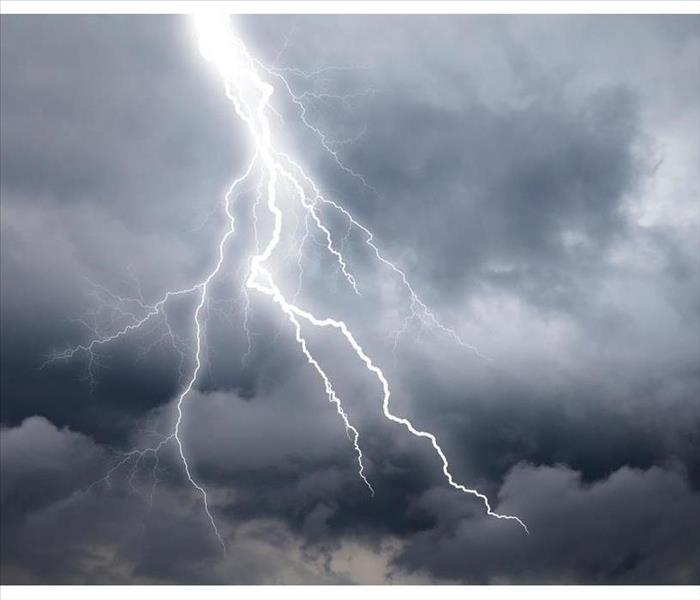 Flood water, harsh winds and rain can harm your establishment. Get ahead of trouble by having a plan and taking action to minimize issues.
Flood water, harsh winds and rain can harm your establishment. Get ahead of trouble by having a plan and taking action to minimize issues.
4 Ways To Prepare Your Business For A Severe Storm
The weather report calls for severe storms, and as the day passes, the impending system appears worse than expected. What should a proprietor do? Are there actions to take to ward off problems? After all, if a significant weather system passes through Sharon Hill, PA, your business could be impacted by tornadoes, flood water, intense wind speeds and hail.
These conditions prove destructive for properties. Business owners should understand how to get ready for the storm and restore the premises once it passes.
1. Create a Disaster Preparedness Plan
A flooded building proves chaotic. Get organized. With other team members, put together a notebook of safety procedures. Within the documents, have copies of insurance policies, the number for a water restoration company and instructions on safeguarding the premises and employees. Designate points of contact.
Also, gather and store the following supplies within a back room:
- A battery-operated weather radio
- Flashlights
- First aid kit
- Extra batters
- Water bottles
- Non-perishable snacks
2. Move Valuables to Higher Levels
If flood water breaches the walls, valuables and structures become contaminated and ruined, some of which may not be salvageable. Protect your property by moving important items up off the ground.
3. Create Flood Barriers
Use sandbags around the perimeter to reduce water penetration. It's best to have them on hand for a prompt response. Begin in low-lying sections, placing plastic sheeting down first. Then, stack the bags as if laying down bricks, with one slightly overlapping the other.
4. Store Electronic Data
If electronics sustain water damage, saved data is likely lost. Take the time to save your critical emails, documents and invoices to the cloud and a hard drive. It's better to have it in multiple places.
Flood water and harsh winds and rain can harm your establishment. Get ahead of trouble by having a plan and taking action to minimize issues. This effort could save remediation time and reduce repair costs.
Emergency Preparation: Ensuring Commercial Generators are Maintained
1/11/2022 (Permalink)
 SERVPRO is here to help in your time of need. We are storm damage restoration experts who are available 24 hours a day to respond when you need us.
SERVPRO is here to help in your time of need. We are storm damage restoration experts who are available 24 hours a day to respond when you need us.
Emergency Preparedness: Keeping Commercial Generators In Working Order
A generator is a pivotal piece of machinery for many businesses, especially medical and manufacturing practices. These tools ensure that a business can maintain operations in the event of a power failure, and whether for safety concerns or production value they must be maintained. Failure to perform adequate maintenance can lead to a litany of issues, but there are four that are the most common.
1. Battery Failure
The leading cause of generator problems is battery failure. Failure occurs because a battery has not been charged properly or it needs to be replaced due to age. Most failures can be avoided by making sure that all cables, chargers and batteries are checked regularly and that their condition remains in good standing.
2. Leaks
Generator leaks are common and usually preventable through routine maintenance. These leaks can occur in the fuel, oil or coolant lines. Those leaks occurring in the coolant line are likely due to a block in the hoses leading to the heater. However, all leaks are preventable with regular checkups.
3. Low Fuel
Another common problem is faulty fuel gauges leading to low fuel. In order to avoid this issue, you can get in the practice of manually checking fuel tanks and having additional fuel storage on hand at your facility.
4. Starting Issues
If your machine is not set to auto, then it will not start up when a power outage occurs. However, if this is not your issue, then you can try a manual reset of the system. If that fails to work, then you can contact a storm preparedness specialist in the Sharon Hill, PA, area to figure out other possible causes.
A generator can be a potential life-saver, both figuratively and literally, for many business owners. However, these machines do have their kinks and must be regularly maintained to function correctly in the event of an emergency.






 24/7 Emergency Service
24/7 Emergency Service







